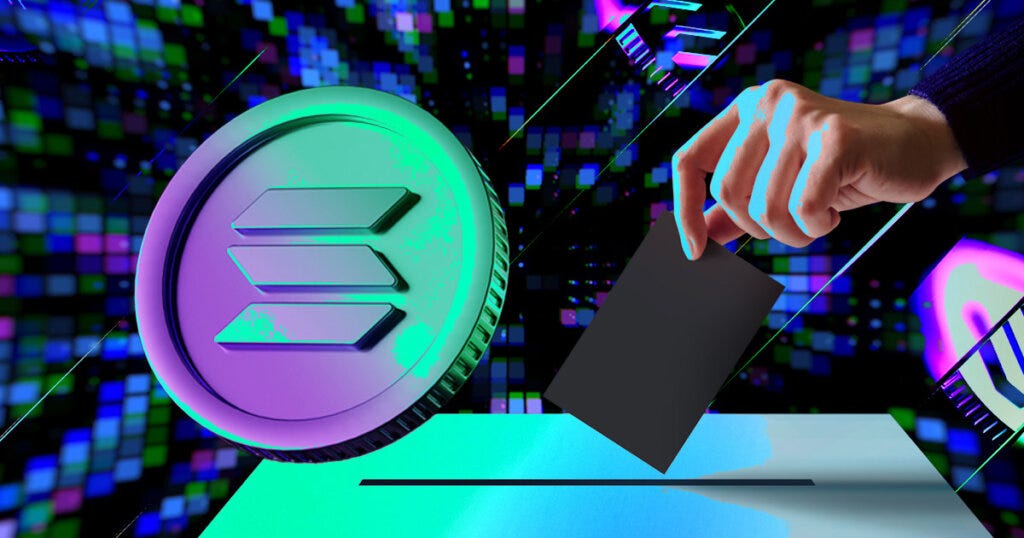Summary
Introduction
What is Render
OctaneX
Integration of Render Network
Render Moves to Solana
Why Solana?
How Render can change the World
Solana DePIN Narrative Strengthens
Hivemapper
Tekkon
Helium
Conclusion
Introduction
Many believe it is an exciting time for crypto, as the rise of Artificial Intelligence (AI) provides clarity over challenges that can theoretically be solved with blockchain technology. In addition, deglobalization is happening in real-time due to the rising hostility between the biggest superpowers in the world. This leads to several logistical and technological challenges which may drastically change the supply chain. Today we will talk about Render (RNDR), its partial transition to Solana and how it is building a case for changing the world of rendering.
What is Render
RNDR is a blockchain-based project developed by OTOY that aims to transform cloud rendering and distributed computing, through the creation of a decentralized network of rendering nodes.
Artists and developers can leverage this network to accelerate their rendering processes. The RNDR token is Render's native cryptocurrency, facilitating transactions and incentivizing users to contribute their computational power. By decentralizing rendering, RNDR aims to make it more accessible, cost-effective, and efficient for industries like film production, gaming, and architecture.
OctaneX
On December 27, OTOY launched OctaneX, essentially the smartphone version of OctaneRender, available as a free download for M1 and M2 iPads. The Apple Store Preview describes OctaneX as enabling "real-time, photo-realistic 3D rendering. Fast." The app was also featured in one of Apple's YouTube videos.
OctaneX provides users access to Render Network's decentralized grid of GPU processing units, allowing thousands of digital creators to tap into the Render Network for their graphic processing needs. With the potential to reach millions of users once OctaneX becomes available on iPhones, the adoption of Render could grow significantly as more developers, designers, and architects utilize the software for gaming, film, and other productions.
Integration of Render Network
The integration of Render Network, developed by Jules Urbach, the founder of OTOY, with Apple and its compatibility with OctaneX, has recently caught the eyes of many investors, traders and speculators. In addition, Render Network's expansion into the Solana blockchain has further contributed to the significant surge in the token price (RNDR), making headlines in the process.
Render Moves to Solana
In addition to the integration with Apple, Render Network recently moved its core product to the Solana blockchain. The Render community approved the network's expansion to the Solana blockchain, after a governance vote which proposed to deploy their burn-to-mint mechanism away from Polygon.
Why Solana?
Developers prefer to use Solana for its high performance, scalability, low fees, developer-friendly ecosystem, interoperability, and support for smart contracts. Solana offers fast transaction processing, can handle high transaction volumes, and has a reputation for low fees compared to other networks.
How Render can change the World
The rising demand for graphic rendering solutions in industries like VR, gaming, and film production has created a global shortage of GPUs, which is expected to worsen exponentially as the deglobalization conflict over chip manufacturing control between the US and China has further complicated the supply chain, making it harder to obtain essential raw materials.
In this landscape, Render emerges as a game-changing decentralized computing solution. It offers a cheaper, faster, and easily accessible alternative to traditional rendering methods by harnessing distributed computing power. By tapping into underutilized resources, Render democratizes high-quality rendering.
In addition, the Metaverse makes Render even more important. If even a fraction of the Metaverse's vision becomes a reality, rendering demands will be insatiable. Traditional hardware-based solutions cannot meet this infinite demand, making Render's decentralized approach all the more valuable.
Render's strategic positioning and advantages make it a leading player in the industry. By leveraging decentralized computing, Render overcomes the limitations of centralized GPU power, addressing the current shortage and paving the way for a sustainable rendering future.
Solana DePIN Narrative Strengthens
Decentralized Physical Infrastructure Networks (DePIN) are a significant development in blockchain technology. DePIN utilizes tokens as incentives to encourage communities to collaboratively construct physical infrastructure networks and decentralized applications (dApps) such as charging stations and telecommunications systems.
Hivemapper
The Hivemapper Network is a revolutionary mapping system that incentivizes map coverage, quality, and freshness through ownership. By installing a 4K dashcam on their vehicles, contributors earn a new cryptocurrency (HONEY) and become part owners of a decentralized global map. This decentralized approach disrupts the dominance of monopolies and governments in the mapping industry, creating a constantly updated, high-quality map owned collectively by its contributors.
Tekkon
Tekkon is an innovative app that merges the captivating qualities of Pokemon Go with the objective of collecting data that aids in the maintenance of power lines and water networks. Developed by the Whole Earth Foundation, Tekkon aims to significantly reduce the cost of maintenance for public utilities by encouraging everyday citizens to contribute valuable data about their communities' infrastructure.
Through a combination of technology, social engagement, and a fun, gamified approach, Tekkon is transforming the way public utilities manage infrastructure maintenance.
Helium
The Helium Network is a decentralized wireless network explicitly designed for Internet of Things (IoT) devices. It operates using a unique blockchain-based infrastructure and incentivization system to facilitate the deployment and operation of IoT devices.
Helium shut down its own blockchain and migrated into the Solana network, as it garners the right conditions to support the long-term growth of Helium’s mission.
Conclusion
Render is a decentralized computing solution that revolutionizes rendering amid a global GPU shortage and the growing demand for the Metaverse. With the escalating demand for graphic rendering solutions and the challenges posed by the deglobalization conflict over chip manufacturing, Render offers a cheaper, faster, and easily accessible alternative. With the migration of its burn-and-mint mechanism from Polygon to Solana, the Solana DePIN narrative strengthens.








